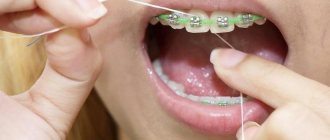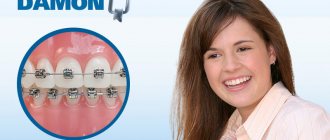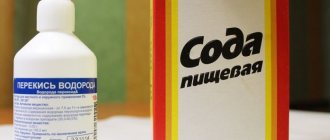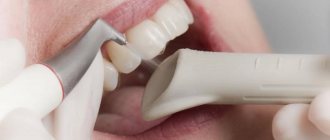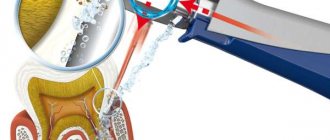Dental calculus is one of the most common pathologies. According to statistics, more than 65% of adults have it. Tartar should not be treated only as an aesthetic defect.
In addition to causing bad breath, tartar is the cause of many dental diseases and promotes infection in the body. Therefore, it is necessary to prevent stone formation, and if it forms, immediate treatment by a dentist.
What is tartar
Tartar is a hard, calcareous deposit on the surface of the tooth that is yellowish to dark brown in color. Initial plaque consists of food debris, dead cells, mucus and microorganisms. The stone is formed when soft plaque accumulates and thickens, and its gradual mineralization with calcium, phosphorus and iron salts. First, it forms in places where plaque accumulates the most: in the gingival zones, in the tooth sockets and in the interdental space. Most often on the inside of the dentition, where there is a hard-to-reach area for brushing teeth and the exit of the salivary gland canals. As the process progresses, it can cover the entire visible surface of the tooth and go under the gums.
How does an irrigator help with tartar?
One of the most frequently asked questions about whether an irrigator removes tartar can be answered this way: the irrigator helps with the prevention of tartar. It can only help if deposits have just begun to form and they have not yet formed stone. Regular and thorough brushing with a toothbrush and toothpaste, flossing, and completing your oral care with a irrigator can greatly reduce the risk of tartar.
But even in this case, tartar cleaning should be completed in the dentist’s office: the doctor will grind the enamel to eliminate roughness that facilitates the formation of plaque.
How quickly does a stone form?
The rate of stone formation varies from person to person and depends on hygiene skills and factors contributing to stone formation. In the absence of brushing your teeth, within a few hours after eating, a thick film of a huge number of bacteria feasting and multiplying on food debris forms on the surface of the tooth. After a week, the film thickens due to mineralization processes. On average, it takes about 4–6 months to form a dense stone. Therefore, a preventive examination by a dentist is necessary at least once every six months.
Cleaning teeth from stone: techniques and their effectiveness
Table of contents
- Causes of tartar formation
- Methods for removing tartar
- Stone removal technique
- Cost of teeth cleaning
- Advantages of carrying out the procedure at MEDSI
We offer all patients of the MEDSI clinic a dental tartar cleaning
.
The procedure is carried out by dentists at least once every six months
and helps
prevent the development of caries and dangerous gum pathologies
, ensure fresh breath, relieve the patient of complexes and achieve overall oral health.
Teeth cleaning from tartar is carried out in MEDSI clinics using modern safe and highly effective methods to avoid tissue injury. During a fairly simple procedure, which usually lasts no more than 40-60 minutes, patients, even with a low pain threshold and high sensitivity, do not experience significant pain or discomfort. Thanks to this, cleaning can be carried out in almost all cases.
Causes of tartar formation
In the oral cavity of each of us, 200 billion different bacteria and other microorganisms are concentrated. At the same time, not all people devote enough time and effort to hygiene. Often it is not carried out very well and not as often as required. Few people use a toothbrush or even just rinse their mouth after breakfast, lunch and dinner to remove food debris. As a result, bacteria actively multiply and settle on soft and hard tissues, in gum pockets and in the spaces between elements of the dentition.
At first, the deposits remain soft, they can still be removed at home by regularly practicing hygiene. If soft deposits are not removed in a timely manner, they will harden and turn into dense stone. It is almost impossible to get rid of it
.
It is the stone (hard plaque) that causes:
- Bad breath
- Pigmentation of the enamel (its partial or complete darkening), worsening the appearance of the oral cavity and provoking a number of complexes in a person
- Development of caries
- The occurrence of pathological processes even in the gastrointestinal tract
Important! Tartar can appear even in those people who do not neglect hygiene, regularly brush their teeth and use special floss (dental floss) or irrigators. This is due to the fact that it is almost impossible to clean narrow spaces and gum pockets efficiently.
There are certain categories of foods and drinks that provoke a fairly rapid and intense formation of dense plaque, and then stone. These include coffee and wine, as well as sweets, pastries, and other delicacies. No one is protected from the occurrence of unpleasant plaque and tartar.
For this reason, we recommend regular teeth cleaning at MEDSI.
!
Methods for removing tartar
There are several popular methods that allow you to quickly and efficiently combat deposits.
You can remove tartar:
- By mechanical cleaning.
This technique is outdated and extremely rarely used these days; it has a number of disadvantages, the main of which is
gum trauma
. The procedure involves scraping off deposits using curettes (instruments with sharp edges), which can provoke not just discomfort, but pain and inflammatory processes. It is strictly forbidden to carry out such manipulations in case of inflammatory processes and pathological conditions of soft tissues - Sandblasting (AirFlow ).
This technique is more modern.
To remove tartar from teeth, use baking soda or sodium bicarbonate. The finished mixture is supplied under fairly high pressure, which allows you to literally knock down tartar. The liquid washes it away and at the same time allows you to cool your teeth. This technique is effective in the fight not only against stone, but also against soft plaque and pigmentation. Unfortunately, it cannot cope with large deposits. In addition, sandblasting is not carried out if there is inflammation of the gums
, as it can provoke a worsening of the condition. - Ultrasound.
This method is not only
more effective, but also less traumatic
than the previous two.
This cleaning is carried out using a special scaler (tip), which oscillates at a speed of approximately 100,000,000 movements in 60 seconds and destroys the bonds between the teeth and the formations on them. Additionally, ordinary purified water or an antiseptic is used. They provide cooling to the teeth and the tip itself. In addition, water allows you to remove all particles of stone from the interdental spaces and in the periodontal pockets. Immediately after brushing your teeth, their surface loses its smoothness, so additional treatment is carried out. It consists of polishing with pastes and brushes that eliminate roughness. This additional treatment helps prevent re-formation of plaque. Ultrasonic cleaning of teeth from stone provides many opportunities to remove all soft and hard deposits. Its advantages include the ability to improve the overall health of the oral cavity. - Laser.
This method is the most gentle.
The laser acts in a targeted manner
, affecting only unwanted formations, without damaging the surface of the teeth and gums, since the special attachment simply does not come into contact with them. All deposits are crushed into very small particles and washed away with water and air. The advantages of the method also include the fact that after brushing, teeth better absorb all the nutrients contained in food and toothpastes.
Stone removal technique
The stone removal technique involves several stages:
- Injection of a local anesthetic (not in all cases, usually with increased sensitivity or large amounts of deposits). Most often, no anesthesia is required
- Removing deposits
- Cleaning with abrasive strips. They allow you to efficiently clean the spaces between your teeth. The need to use strips is due to the fact that even a thin tip cannot penetrate into tiny gaps
- Removing all remaining deposits
- Teeth polishing
- Application of protective and strengthening varnish to the enamel
- Treatment of gums with an anti-inflammatory agent (if necessary)
- Teaching the patient proper hygiene
To maintain a long-term effect after the procedure, you must:
- Refrain from consuming drinks and foods high in synthetic or natural colors (soda, red wine, tea, coffee, carrots, beets, etc.) for the next few days
- Use a toothbrush of medium hardness, which ensures high-quality hygiene but does not allow tissue injury
- Replace your toothbrush regularly (once every 3 months), regardless of the degree of contamination and condition.
- Use the paste recommended by your doctor
- Brush your teeth, use dental floss or an irrigator at least 2 times a day
- Visit your dentist at least 2 times a year for re-cleaning
Only regular and good hygiene and adherence to the simplest recommendations will allow you to maintain the ideal condition of the oral cavity.
and save on the treatment of complex pathologies.
Important! The procedure should not be delayed.
Remember that harmful bacteria actively multiply in the oral cavity, and if a stone has already appeared, you will not be able to eliminate it yourself. Even the most expensive toothpastes won't cope with hard plaque, and the best brushes won't help remove it from gum pockets and spaces between teeth.
Cost of teeth cleaning
Are you planning to use a service such as teeth cleaning to remove tartar?
The cost depends on factors such as:
- Selected method
- Basic and additional services
- Number of teeth requiring professional cleaning
You can check the exact cost with our specialists by calling +7 (495) 7-800-500.
We not only adhere to a loyal pricing policy, offering services on favorable terms, but also periodically hold various promotions and provide discounts, which allows our clients to reduce costs for an important hygiene procedure. You can check the cost of the service in advance, which will allow you to plan your expenses. Make an appointment so that your dentist can select a technique that suits the condition of your oral cavity and determine the exact price of the procedure.
Advantages of carrying out the procedure at MEDSI
Teeth cleaning from tartar in our clinics is carried out:
- Experienced dentists
with special skills and professional knowledge in the field of aesthetic dentistry, studying new technologies and improving professionalism within their specialization - Using modern and safe techniques
that have already proven themselves - Quickly and painlessly
, thanks to which our patients return to us again and again without fear or doubt - At an optimal cost, ensuring the availability of services
for all categories of our patients - After determining all indications and contraindications and a thorough examination by a specialist
- At a time convenient for the patient, without queues and unnecessary worries
, in a comfortable environment. We understand the patient's need to participate in the treatment process. Therefore, the purpose and content of each procedure are explained to him in detail, not only the final, but also intermediate results of the work are demonstrated, photographic documentation is carried out - “In 4 hands”: each doctor is assisted by an assigned assistant, which allows him to perform medical procedures quickly and accurately
Contact us if you want your smile to always be dazzling! Call +7 (495) 7-800-500 to make an appointment for consultation and for the cleaning itself.
Symptoms
Signs of tartar:
- using a mirror you can see dark deposits on the teeth near the gums (mostly on the inside), which do not disappear after hygiene procedures;
- darkening of tooth enamel;
- constant bad breath;
- bleeding gums when brushing teeth;
- increased gum sensitivity;
- deepening and widening of gum pockets, exposure of tooth roots.
Only supragingival plaques can be seen visually; subgingival formations are diagnosed by a doctor.
Why is tooth stone dangerous?
In addition to an aesthetic defect, tartar is a common cause of a repulsive putrid odor from the mouth. In addition, stone formation can provoke the development of severe dental diseases:
- caries;
- gingivitis;
- periodontitis;
- tooth loss.
The presence of stone deposits reduces the local immunity of the oral cavity, which increases the proliferation of bacteria and aggravates the manifestation of their pathogenic properties. The consequence of the activity of bacteria is the destruction of tooth enamel and the development of various inflammatory processes in the oropharynx. Subgingival stones destroy the connection between teeth and bone, causing them to loosen and fall out. With severely advanced processes, it is no longer possible to stop tooth loss.
Is it painful to remove subgingival calculus?
When cleaning stone in subgingival pockets, in most cases, mild pain occurs. This is explained by the fact that the stone is attached directly to the periodontium. Even a thin layer of enamel significantly reduces tooth sensitivity; it simply does not exist in the subgingival zone. Therefore, discomfort during the procedure is a completely reliable and expected phenomenon.
Subgingival stone must be removed, as it causes the development of putrefactive bacteria and contributes to the occurrence of caries and inflammatory diseases of the oral cavity.
Causes of tartar
The formation of tartar is a consequence of:
- insufficient or improper oral hygiene;
- disorders of mineral metabolism in the body, which is often associated with the presence of chronic diseases or genetic predisposition.
Factors that contribute to the formation of tartar, subject to insufficient hygiene, include:
- defective position of teeth;
- roughness of the tooth surface, often due to the installation of low-quality filling material or insufficient polishing;
- presence of braces and dentures.
- preference in the diet for soft and carbohydrate foods;
- one-sided chewing;
- smoking;
- alcohol abuse;
- hypersalivation (secretion of large amounts of saliva);
- a general decrease in the body’s immunity and the presence of foci of chronic infection.
Kinds
Plaque is divided into two categories. First, supragingival stone appears, the cause of which is poor oral hygiene. Such deposits are located above the upper edge of the gingival crest, so they are easily diagnosed during a routine examination.
The characteristic features of supragingival tartar include:
- Localization on the inner surface of the tooth, from the side of the tongue;
- White or yellowish tint;
- The consistency is hard or clay-like.
The plaque is unstable, so it can be removed mechanically without any problems.
Subgingival calculus appears as a result of the fact that supragingival plaque descends down the root of the tooth and mineralizes. It forms in the gum pocket and is diagnosed only when using special dental instruments. Such deposits are considered age-related and most often appear in people over 40 years of age. If personal hygiene rules are not followed, it can appear at any age.
Signs of tartar:
- Dense and hard consistency;
- Light brown or greenish-black tint;
- Swelling and bleeding gums.
Smokers' tartar
There are practically no heavy smokers who do not have tartar. Tar from tobacco smoke and soot deposit a yellow coating on tooth enamel. It is easier for food debris to stick to this plaque and for bacteria to multiply comfortably. Gradually, under the influence of both saliva and tobacco smoke, various salts are deposited in plaque and brown tartar is formed. In addition, tobacco smoke contains toxic substances and heavy metals, which trigger the process of detachment of the gingival margin from the teeth. Food is stuffed into the deep gaps and optimal conditions are created for the growth of colonies of pathogenic bacteria. A regular toothbrush does not sweep out pathological contents from such pockets. And bacteria eat away the connective tissue between teeth and bone, exposing their roots. A dangerous inflammatory disease – periodontitis – gradually develops. Tartar deposited under the gum does not give a chance for self-healing, but turns the disease into a chronic form. Combined with the effects of tartar and destruction of the connective tissue that anchors the teeth, the process of development of periodontitis in smokers proceeds 3 times faster than in non-smokers. This leads to rapid tooth loss. According to statistics, 80-year-old smokers have 2.5 times fewer teeth than non-smokers.
Benefits of ultrasonic tartar removal
Ultrasonic tartar removal technology has the following advantages:
- It is highly effective; using ultrasound, it is possible to remove tartar from both the external surfaces of the teeth and the subgingival space;
- When removing tartar, ultrasound does not injure or damage tooth enamel;
- Ultrasound destroys pathogenic microflora in the oral cavity, and therefore removal of stone and plaque by ultrasonic cleaning is an excellent prevention of various dental diseases;
- The procedure for removing tartar using ultrasound is quick and painless for the patient.
The advantages of ultrasonic tartar removal include the affordable price of the service. Ultrasonic cleaning is universal and can be carried out as an independent hygienic procedure or in combination with Air Flow cleaning. It is imperative to remove tartar with ultrasound before dental treatment, prosthetics, implantation, or wearing braces.
Prevention of stone deposits
Prevention of any disease is always cheaper than its treatment. This applies not only to the financial component, but also to the temporary and psychological component.
The most important thing in preventing dental diseases is proper oral hygiene.
How to brush your teeth
To prevent the formation of tartar, learn how to brush your teeth correctly:
- Movements when brushing your teeth should be “sweeping”, in the direction from the gums to the edge of the tooth.
- First brush your front teeth, then carefully treat the inner surface of the dentition.
- The chewing surface is cleaned with back-and-forth and circular movements. Don't forget about your wisdom teeth.
- The duration of cleaning should be at least 3 minutes. To do this, it is convenient to have an hourglass in the bathroom or to clean while listening to a certain musical composition.
- Brush your teeth at least twice a day. The first time is after breakfast, the second time after dinner. If you are prone to the formation of stones, brush your teeth additionally after each meal.
Choosing a toothbrush
Not everyone knows how important it is to choose the right brush. Listen to the experts:
- Choose a high-quality, medium-hard toothbrush, preferably with rubber blades, which increase the effectiveness of removing plaque and polishing teeth.
- Soft brushes are only suitable for children or during periods of bleeding and sore gums.
- Hard brushes can be used 1 or 2 times a week. They should not be used in places where the necks of the teeth are exposed, especially if the sawing cleaning is improper. This contributes to the formation of wedge-shaped defects.
- Don't forget to change your brush every month.
Interesting experiment!
American doctors conducted an experiment, the participants of which were divided into 5 groups.
The first group: brushed their teeth with regular brushes and expensive toothpaste for 1 minute.
Second group: brushed their teeth with regular brushes and expensive toothpaste for 5 minutes.
Third group: they brushed their teeth with regular brushes and cheap toothpaste for 5 minutes.
Fourth group: they tried to brush their teeth without a brush, by rubbing expensive toothpaste with their fingers.
Fifth group: brushed their teeth with regular brushes without toothpaste, but for at least 5 minutes.
The experiment lasted a week. Every day after the procedure, the cleanliness of the teeth was measured.
At the end of the week there were the following results (the more stars, the cleaner the teeth):
| Group number | Brushes | Paste | Cleaning time | Result |
| 1 | Regular | Expensive | 1 minutes | Bad result |
| 2 | Regular | Expensive | 5 minutes | Excellent result |
| 3 | Regular | Cheap | 5 minutes | Excellent result |
| 4 | Without brushes | Expensive | 5 minutes | No result |
| 5 | Regular | Without paste | 5 minutes | Good result |
Conclusion: it turned out that when brushing your teeth, the toothbrush and the time spent on the procedure are important. You can brush your teeth even without toothpaste; it will be much more effective than using toothpaste without a brush. And if you clean it correctly, there is almost no difference between expensive or cheap toothpaste.
Other hygiene rules
- For continuous use, use only therapeutic and prophylactic pastes from well-known companies. For people prone to the formation of stones, it is useful to periodically brush their teeth with abrasive whitening pastes, for example, 2 times a week.
- After each meal, thoroughly rinse your mouth with special elixirs, and if you don’t have them on hand, you can use plain water.
- Use floss (special thread) to remove plaque between teeth. Floss is used both after brushing your teeth and without it in the afternoon. However, do not make cutting movements (back and forth), so as not to damage the gums, the movements should be: up and down.
- After brushing your teeth, use special devices - irrigators, which, under the pressure of a stream of water, will clean all places that are difficult for a brush to reach from bacteria and food, and improve blood circulation in the gums and dental pulp. In addition, you can polish your teeth with a special irrigator attachment, then it will be more difficult for the stone to be deposited on smooth enamel. Today, irrigators are recognized by dentists as one of the most effective ways to prevent tartar.
- Quit smoking completely. Or, at worst, use electronic cigarettes, the vapor of which does not contain toxic substances and resins involved in the formation of stones.
- Get a preventive examination from your dentist at least once a year, and more often if indicated.
- Have your teeth professionally cleaned periodically.
Preventive measures
Prevention of deposits involves good, regular oral hygiene. To do this, you need to brush your teeth daily, several times a day, using not only a brush, but also a special floss. It is also recommended to use pastes with high abrasive properties, consume birch and lemon sap, and raw fruits and vegetables in large quantities. gels that strengthen tooth enamel.
Following these simple recommendations will allow you to remove deposits with the help of professional intervention less often, about 2-3 times a year. gels that strengthen tooth enamel.
It is recommended to carry out the procedure for removing deposits on teeth twice a year; in this case, not only the aesthetic appeal of your smile will be achieved, but also the prevention of various inflammatory processes in the gums. Also, after the teeth cleaning procedure, they are polished with special fluoride-containing gels that strengthen tooth enamel.
Ultrasonic toothbrushes
Recently, a new gadget has appeared on the market - an ultrasonic toothbrush. In addition to mechanical cleaning, this brush provides ultrasonic treatment of hard-to-reach areas of the tooth and gums to a depth of up to 4 mm. Ultrasonic waves destroy bacteria and effectively remove pigmentation and deposits when mineralization begins. However, such a brush cannot remove formed tartar; this can only be done by a specialist using professional equipment. In addition, the use of an ultrasonic brush is effective and safe only for people with absolutely healthy teeth.
Tartar: how to get rid of it at home
Most people understand that the best way to resolve any dental problems is to visit the dentist. However, not everyone likes to contact a specialist, delaying the visit until the last minute in the hope that the problem will somehow resolve itself. This is largely facilitated by advertising offering treatment for all occasions.
So how to remove tartar at home? Unfortunately, no way. Even the most expensive products will not be able to remove thick plaque and stone. However, ultrasonic or electric brushes, as well as special toothpastes, will help get rid of the soft plaque that is just beginning to form.
Contraindications to ultrasonic brushes
Due to the presence of ultrasonic microvibration, the use of such brushes is not recommended for persons:
- with veneers, fillings and crowns, as their service life is reduced;
- with areas of loose and porous enamel, due to the fact that the development of the carious process accelerates due to the destruction of defective enamel;
- with gingivitis and periodontitis, due to the increased spread of infection by hematogenous route;
- with periodontal disease, as the process of bone destruction accelerates;
- having precancerous changes and cancer, due to the acceleration of the division of atypical cells.
These significant drawbacks significantly limit the use of ultrasonic brushes, since almost 95% of the adult population have certain problems. It is also not recommended to use any power brushes during pregnancy or for people with pacemakers.
Hardware ultrasonic cleaning.
This is the most popular and effective way to remove mineral deposits. Ultrasonic waves break up tartar and easily remove it from the enamel surface. Moreover, such cleaning has an antiseptic effect and is therefore also indicated for gum inflammation. If the stone formation is very dense, before the cleaning procedure, means are used to soften it, then ultrasonic removal of deposits is carried out. During ultrasonic cleaning in the area of the neck of the lower incisors, when the roots are exposed, there may be mild pain. Then, at the request of the patient, local anesthesia is applied.
Despite the presence of many contraindications for the use of ultrasonic toothbrushes, the use of ultrasonic cleaning when removing stone is necessary. First, the dentist will use visual guidance to avoid areas of thinned, porous enamel. Secondly, one-time professional cleaning does not have as negative an effect on fillings as twice-daily brushing.
Laser cleaning.
The newest non-contact method of removing hard dental deposits is highly effective and absolutely painless. However, the price is much more expensive than ultrasonic. Laser cleaning has the same contraindications as ultrasonic cleaning.
Air-flow
Refers to mechanical methods. A jet of air with a therapeutic abrasive mixture is supplied under pressure, which removes both soft plaque and hard deposits. The gum area may tingle during the procedure. It is less effective than ultrasonic and laser cleaning.
Manual method
Mechanical manual method of beating stones using special tools. Currently, it is outdated due to the painfulness of the procedure, the presence of complications and the emergence of more effective methods. It is used free of charge under the compulsory medical insurance policy in public hospitals or as an additional method of treatment if indicated. Due to the painfulness of the procedure, especially when removing subgingival stones, local anesthesia is performed. It is a relative contraindication for periodontitis due to high trauma.
Methods for removing tartar used in dentistry
Previously, only mechanical cleaning was used to remove tartar in dentistry, which involved the use of special hand tools: scalers, curettes, excavators, smoothers, chisels, rasps. The procedure was labor-intensive, long and painful for the patient, and also very traumatic.
When manually removing tartar, a fairly large layer of healthy tissue was removed from the teeth and this led to unpleasant sensitivity of the teeth and thinning of the tooth enamel. Nowadays, mechanical removal of tartar is used extremely rarely, only in cases where the patient has contraindications to other methods of cleaning teeth from deposits.
Another outdated and rarely used method of removing plaque is to clean teeth from plaque using special chemical solutions.
The teeth were treated with preparations based on alkalis or acids that dissolve mineralized deposits. However, the chemical method of removing tartar is aggressive, it carries a high risk of burns to the soft tissue of the oral cavity, it negatively affects the condition of tooth enamel, so dentists have long abandoned its use. Nowadays, two modern and highly effective methods are used to remove tartar - ultrasonic cleaning and laser cleaning. We will tell you about these technologies in detail below.
After the procedure
At the end of the procedure, regardless of the method of stone removal, the dentist must grind and thoroughly polish the enamel.
Sometimes, at the request of the patient, after cleaning, the teeth are coated with a special protective composition against infection and plaque buildup.
Within 15 days after cleaning:
- Do not use bleaching abrasive pastes;
- the use of toothpastes from the “sensitive” series, based on herbs and with an anti-inflammatory effect, is indicated;
- rinses with astringent and soothing properties are recommended;
- Do not eat spicy foods or dyes;
- categorically give up smoking or at least abstain for this period.
Will my teeth hurt after the procedure?
Your teeth will not hurt after brushing the stone. On the contrary, the resulting feeling of freshness in the mouth contributes to an overall comfortable feeling. Your doctor may recommend using mouthwash for a while after cleansing.
Important. After the procedure, it is recommended not to eat or smoke for a couple of hours.
Do not ignore preventive visits to the dentist.
It is enough to visit a specialist 1 – 2 times a year, which will allow you to promptly identify any dental problem at an early stage of development. This means that its elimination will be quick, easy and without complications.
By clicking the “request a call” button you agree to the personal data processing policy.
Are there any traditional methods for removing stones?
There are no home methods to remove stones in one procedure, like in clinics. Moreover, with extensive and long-fossilized formations, traditional methods will not help. Grandmother's recipes can only be used when stone formation begins, when the deposits are thick, but still loose and light. In this case, the following will help:
- cleansing teeth with radish pieces;
- It is also useful to eat a salad of grated radish with lemon every day;
- brush your teeth with fresh and already cooled coal ash;
- soften plaque with hydrogen peroxide, then brush your teeth with soda.
It should be noted that the first two methods will definitely not cause harm; they can be safely used, even if they do not help. But the last two options do not have clinical trials and proven effectiveness, and therefore may be unsafe. Therefore, you should not take such dubious and radical measures on your own when dental care is available to everyone.
Contraindications
Contraindications for hardware teeth cleaning include:
- wearing dentures and braces;
- the presence of implants in the body, including pacemakers;
- ARVI, active stage of tuberculosis, HIV infection;
- oncological diseases;
- pregnancy (or with the permission of an obstetrician-gynecologist);
- childhood, until all baby teeth are replaced.
- pregnancy.
Pregnancy is a relative contraindication to dental cleaning. Dental procedures can be performed during a satisfactory pregnancy with the permission of an obstetrician-gynecologist. If there is a threat of miscarriage or other serious conditions, it will be recommended to postpone the removal of stone deposits and the beauty of the smile.




